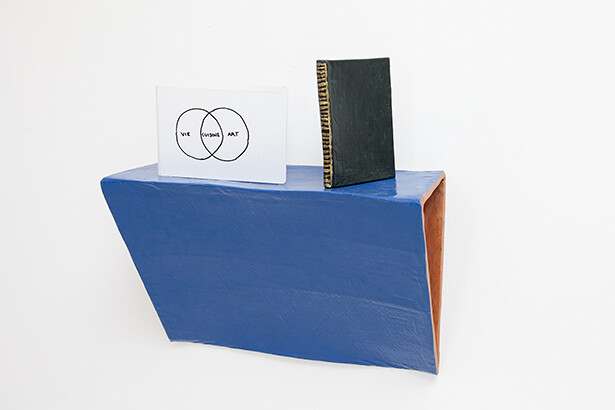Bachelor of Arts (six options) application deadline:
March 20, 2015
Master of Arts (three orientations) application deadline:
March 27, 2015
HEAD – Genève (Geneva University of Art and Design)
Visual Arts Department
Boulevard James-Fazy 15
1201 – Genève
Switzerland
Teaching intrinsically relies on the notion of movement: it allows the circulation of ideas; it is based on a certain idea of performance; on energy. Art education, in particular, is a sort of magnetic field defined by polarities: our role is to create equilibrium in between these ever changing forces. We see the process of designing a program like tightrope walking, or the work of a cartographer expanding territories while recording their borders. Our pedagogy could be described as a geometrical space that is structured both horizontally and vertically: it balances in between freedom and order, closure and disclosure in order to accompany each students’ project towards its fluid realization, enhancing one’s critical faculty, fostering political awareness.
Each “plateau” that structures our theory classes proposes a chronological, methodological or disciplinary variation on the history of recent art, through a constant attention to the new fields opened in social sciences. The courses are informed by the current, singular and innovative research areas that are explored by the teachers, who benefit of the most academic freedom: these findings represent the prime material of our program, which is also animating a network of thoughts that includes the students’ own participation and interests. Aside from the seminars, the form of the workshop is also applied to theory, considered as a practice dedicated to the formation of concepts through texts that can be dismantled and reconstructed, just like any other object.
An interdisciplinary approach reigns over the technical classes, led by active artists, designers, filmmakers, writers and musicians. A particular emphasis is placed on production in the fields that we consider the most promising at the moment: publishing, first, through a program lead by guest publishers who invite students to develop an artist’s book with a graphic designer; writing, through studios that interweaves the disciplinary lines that cross theory, fiction and artistic production (the best texts are published as well); and curating: our curatorial institute is a crucial pedagogical device which initiates the students both theoretically and practically to the current state-of-the-art in exhibition making, through collaboratively produced projects, developed in cooperation with international artists, curators and thinkers.
At the core of the program lie the studios: they are collectively led by artists, curators and theoreticians, and offer an oblique take on artistic practice, a critical attitude towards medium divisions, and a multiplicity of positions: appropriation, action, construction, information/fiction, interaction and representation represent the six paths that students can take at the Bachelor level, while one can go deeper at the Master level, through fields like research (CCC – Research Based Master program), transmission (Trans – Art, Education, Commitment) and production (Work.Master – Contemporary Artistic Practices). Space is the first element that renders these different methodological zones readable, and which also allow the students to navigate in and out of the institution, thanks to the close collaboration of chosen partners. The other one is time: in between project driven proposals and studio-based practice, various temporalities, themes and methods are meticulously knot together.
HEAD – Genève offers one of the most important visual arts departments in Switzerland. But far from any idea of “mass education,” each student plays an active role in the definition of something like a sur mesure program: articulating different intensities, from the individual or even the solitary, long-term learning process to temporary and collective protocols of apprehension of the unknown, the main goal of our school is the building of specific “tools” for future artists and artists of the future, progressively and cooperatively forged through mutual learning, devices that represent the necessary apparatuses designed for self-teaching, intellectual emancipation and artistic exploration of the world.
Faculty & guests professors include (present and future) Danai Anasiedou, Armando Andrade Tudela, Caroline Bachmann, Stuart Bailey, Lars Bang Larsen, Catherine Chevalier, Mathieu Copeland, Marie de Brugerolle, Verena Dengler, Raffael Dörig, Latifa Echakhch, Armen Eloyan, Fredi Fischli, Hervé Graumann, Katharina Hohmann, Tobias Kaspar, Christoph Keller, Christophe Kihm, Quinn Latimer, Charlotte Laubard, Pierre Leguillon, Tobias Madison, Valérie Mavridorakis, Microsillons, Markus Miessen, Uriel Orlow, Florence Ostende, Nicolas Party, Mai-Thu Perret, Anne-Julie Raccoursier, Lili Reynaud-Dewar, Peter Roesch, Didier Rittener, Laurent Schmid, Claude-Hubert Tatot, Frank Westermeyer, David Zerbib.
Recent collaborations include projects co-produced with Afterall Books (London), Art Sonje (Seoul), Biennial of Moving Images (Genève), Cabinet d’Art Graphique (Genève), CCA Wattis Institute (San Francisco), Centre d’Art Contemporain (Genève), Hochschule für Gestaltung (Karlsruhe), Mamco (Genève), MoMA (New York), Palais de Tokyo (Paris), Paraguay Press (Paris), Le Peuple qui Manque (Paris), Sternberg Press (Berlin), Tapies Foundation (Barcelona), UPenn (Philadelphia), the Venice Biennale, Wits University (Johannesburg).
Internal extensions: LiveInYourHead. Curatorial institute at HEAD – Genève; Fieldwork: Marfa. International research residency at Marfa, Texas; and the upcoming Musée des Libellules.
Currently on view:
Ethiopia/Utopia, a proposal by Marie de Brugerolle in collaboration with Work.Master students; and LiveInYourHead. Curatorial institute at HEAD – Genève.
January 29–February 28, 2015
On the occasion of the 20th anniversary of the Mamco, Museum of Modern and Contemporary Art – Genève.

